Volcanoes have caught my attention since I was a child, perhaps influenced by some of Jules Verne’s works, such as Journey to the Center of the Earth. When the La Palma volcano began to erupt (it still has no official name) I thought it was the opportunity to see one in full activity, but the enormous destruction it was causing held me back. How to browse a site where people lost their homes and their livelihood?
However, I heard a palm tree say on television that banana trees accounted for half of the island’s GDP and that the other corresponded to tourism. If this also disappeared, they would be left without sources of income. It was the justification he needed.
I decided to make the trip. I took the risk of doing it by flying directly to La Palma from Madrid. The prudent thing was to do it via Tenerife, and from there take a ferry to avoid the risk of the flight being suspended. But the statistic said that this probability was low, so I took the first option and it worked out fine.
Los Llanos de Aridane: at the foot of the volcano
From the plane, on landing, the volcanic smoke was already observed, which accompanied me throughout the entire journey from Santa Cruz de La Palma to Los Llanos de Aridane, where a university colleague, volcanologistHe had recommended that I stay.
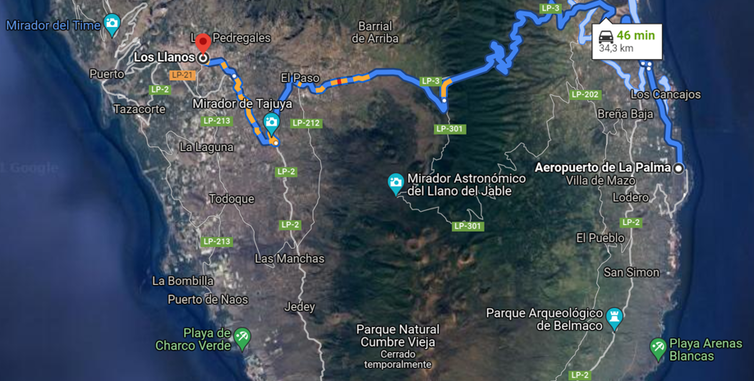
Google Maps
Los Llanos de Aridane is a few kilometers from the volcano. Within 100m of the apartment he could see his broadcasts clearly. He was exposed to the discomforts of the volcano, such as ash, and could observe life in this situation.
In addition, I was just a few minutes from the best observation points. Some night when I returned home relatively early after a busy day, when I found out on Canarian television that it was reactivated, I returned to admire it in all its fury.
On the way from the airport to Los Llanos, you pass by the Tajuya viewpoint, to which I returned several times. It has been turned into a television set. It is probably the accessible site with the best view of the main mouth of the volcano.
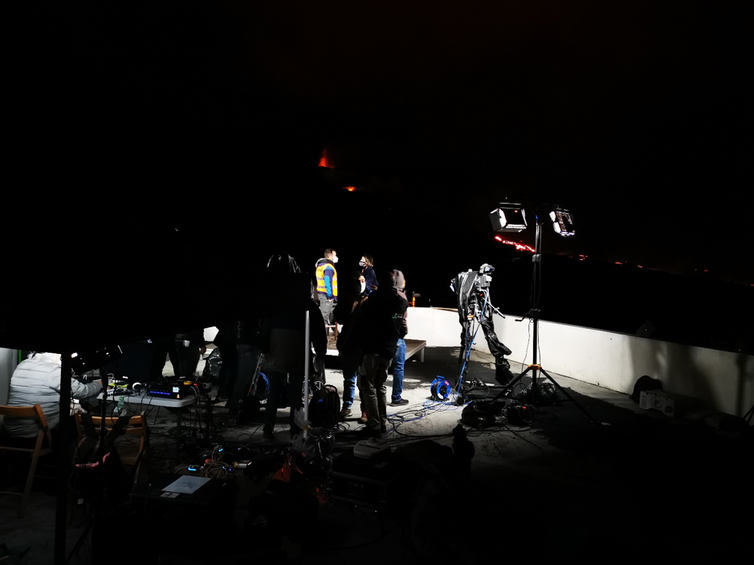
Author provided
The earth trembles on La Palma
The scientific deployment to follow the eruption and coordinate the work is sensational. As I was able to see in the Advanced Command Center, different groups meet in the middle of the morning to coordinate emergency activities.
While I was there, November 16 was the day with the most earthquakes (319) since the eruptions began. Noticeable earthquakes are very few. In four days, I clearly felt the movement of furniture and lamps on two occasions, fortunately only for 1 or 2 seconds. Its origin is in the path of the magma from the upper mantle, where it passes through two magmatic chambers, the outermost one at an average depth of 12 km and the innermost one about 35 km deep. Both are continuously monitored.
Although the strongest earthquakes occur in the deepest chamber, sometimes those with the most intensity (a measure of its effects) occur in the most superficial.
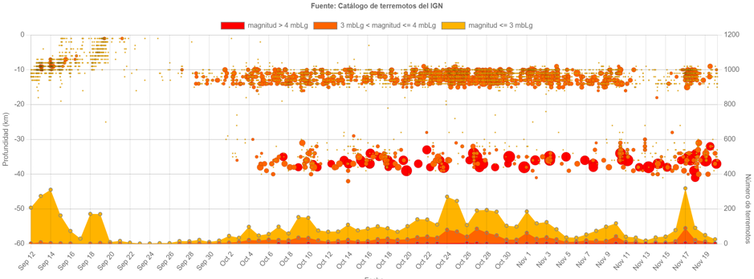
IGME
IGME-CSIC
When the fluids in their ascent to the outside pass through a cavity, its walls vibrate and transmit energy to the environment in the form of waves that produces the movement and noise that is perceived in the vicinity of the volcano, it is what is known as tremor.
Messengers from the deep
Volcanoes are an extraordinary source of information on the Earth’s mantle that humans cannot directly access. The largest drilling carried out has not exceeded 12.3 km (Kola well).
Some of the pyroclastic materials come from the mantle and, therefore, are witnesses to the composition of the terrestrial layer that is under the crust.
How can molten materials exist whose origin dates back to the formation of the Earth, more than 4.5 eons ago? It is partly explained by the pressure exerted by gravity on the Earth’s core, but it is insufficient. It also requires the heat generated by radioactive decay (isotopes of uranium and thorium and potassium 40) produced in the mantle to explain it. The analysis of the pyroclastic bombs informs us of this.
Life amid volcanic ash and gases
An exclusion zone with restricted access has been delimited on the island to which the residents of some towns can access in a controlled manner to clean up the ashes. One of the problems is that part of the highway (LP2) that connects the west with the south is impassable. There are sections where it literally no longer exists (it is buried under lava), which requires alternative routes. Rides that used to take 15 minutes can now take more than an hour.
IGN
In the Aridane valley, where Los Llanos and other inhabited nuclei are, the population lives with ashes and sulfur dioxide. Normally, an FFP2 mask and protective masks, such as the one used by welders, available in hardware stores and other stores, is sufficient. The ash that accumulates on cars can be easily cleaned with a brush. After two months, people try to continue life normally.
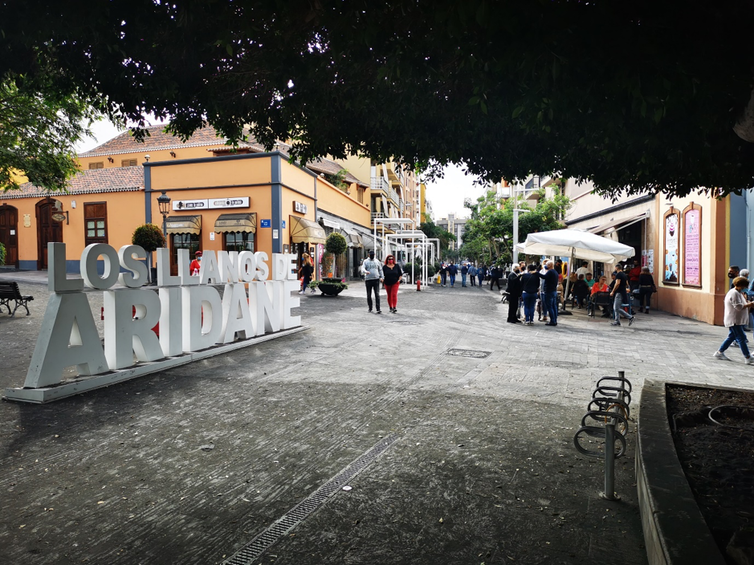
Author provided
The activities to face the volcano are the object of the PEVOLCA (Special Plan for Civil Protection and Emergency Attention for Volcanic Risk in the Autonomous Community of the Canary Islands) which issues a daily report which includes the rules to follow. When the degree of contamination is very high, face-to-face classes are suspended in the affected area.
Experts consider sulfur dioxide emissions as one of the main indicators of the trend of volcanic activity. A recent PEVOLCA report points out that these emissions have reached maximums of 50,000 tons per day on La Palma. However, the trend in recent days has been downward, with values between 900 and 1,300 tons per day on November 21.
The activity of the volcano, live
The images seen on television, frequently captured by drones, are unsurpassed, but watching it live is an unforgettable experience.
The volcano is located on what is known as Cumbre Vieja, although it is really the opposite: a summit that is forming. A local told me that the name is due to the undulations of the terrain caused by the different eruptions, which reminded me of the wrinkles of an old woman.
Time’s viewpoint is relatively distant, but at a high altitude, which gives a more global view. From there you can clearly see that it is a fissure volcano. Although there is a higher cone, there are several mouths.
Variable explosive phases alternate, with ample gas emission, with effusive phases, which produce lava flows. Sometimes they occur simultaneously. At night there are several lava flows that travel 4 or 5 km until reaching the fajana.
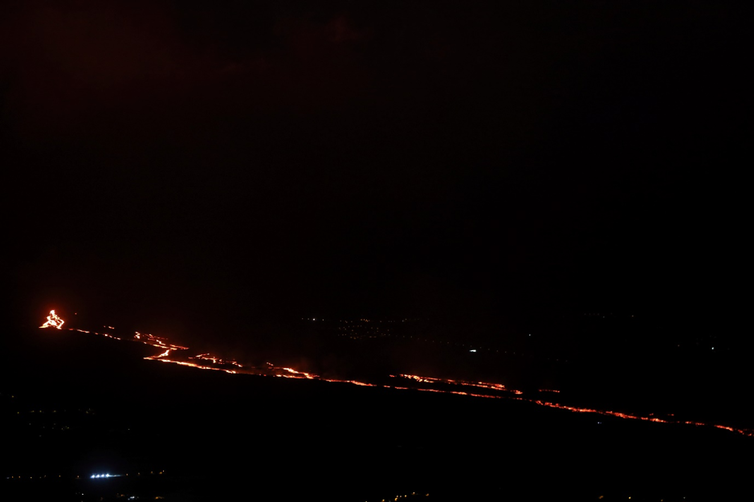
Author provided
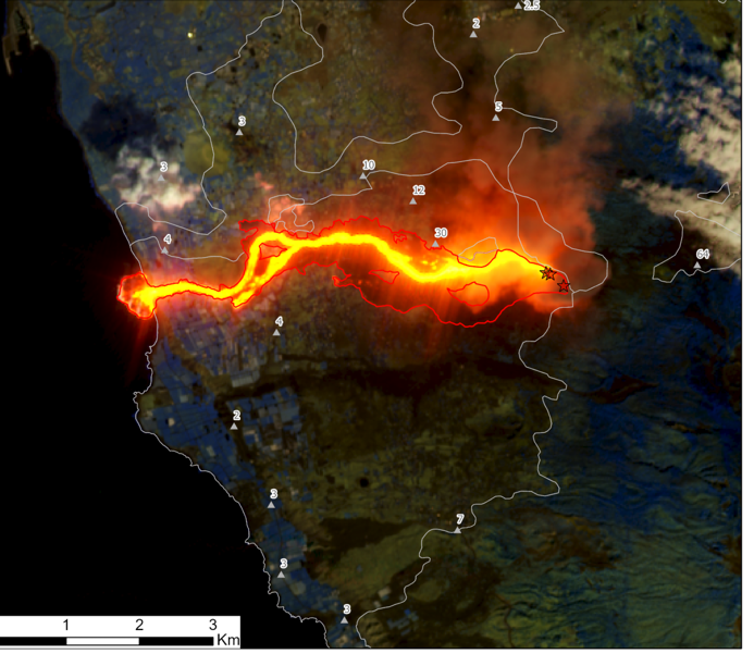
Satélite Sentinel
Forms of volcanic tourism
But the most impressive vision I had when taking a boat tour that approaches until it is located a few hundred meters, perhaps a kilometer, in front of the fajana. Streams of lava poured into the sea like Niagara Falls in slow motion, kicking up a cloud of steam.
The ship, which had a capacity for 50 passengers and was complete, was dedicated to the whale watching. Due to the volcano, those responsible had ceased their activity. Some of them had had to leave their home, as it was in the restricted area. In this situation, they had decided to reconvert the business and replace the whale watching with the unusual route described, which offers a better view of the volcano than the incredible images captured by the drones that fly over it.
Author provided
This spirit of overcoming adversity seems to be a general feeling among the palm trees. Even a councilor of the council presented it on television as an opportunity because, as he said, “it has put La Palma on the map.” I had already visited the island before and the “pretty island” reflects reality. If we also add the possibility of contemplating a volcano in full activity, the experience is unforgettable. Go to La Palma, you will be doing a favor to its inhabitants and to yourselves.
On my last day the plume that came out of the main volcanic cone began to veer in an easterly direction, where the airport is located. I was able to take the plane but in the following days the flights have been suspended, and the volcanoes are unpredictable.
J. Guillermo Sánchez León, Mathematical modeling, University of Salamanca
This article was originally published on The Conversation. read the original.
Reference-www.eleconomista.com.mx